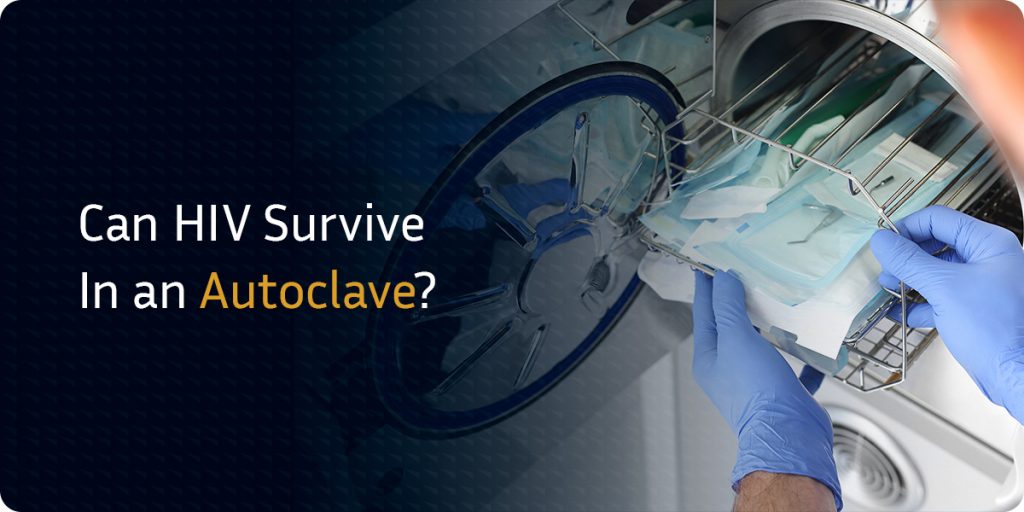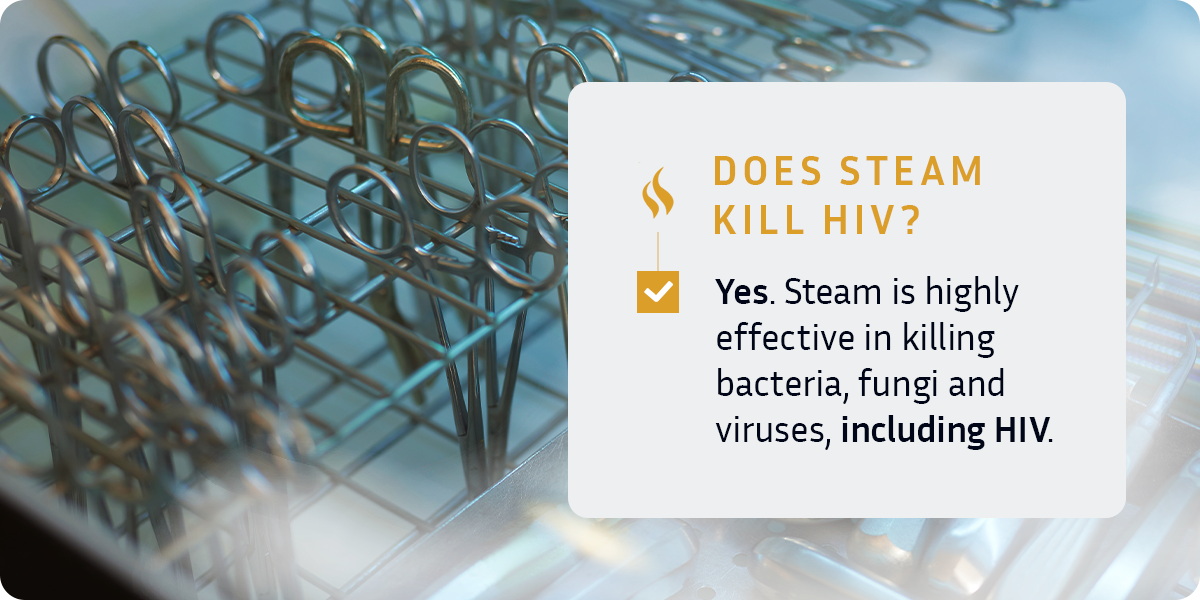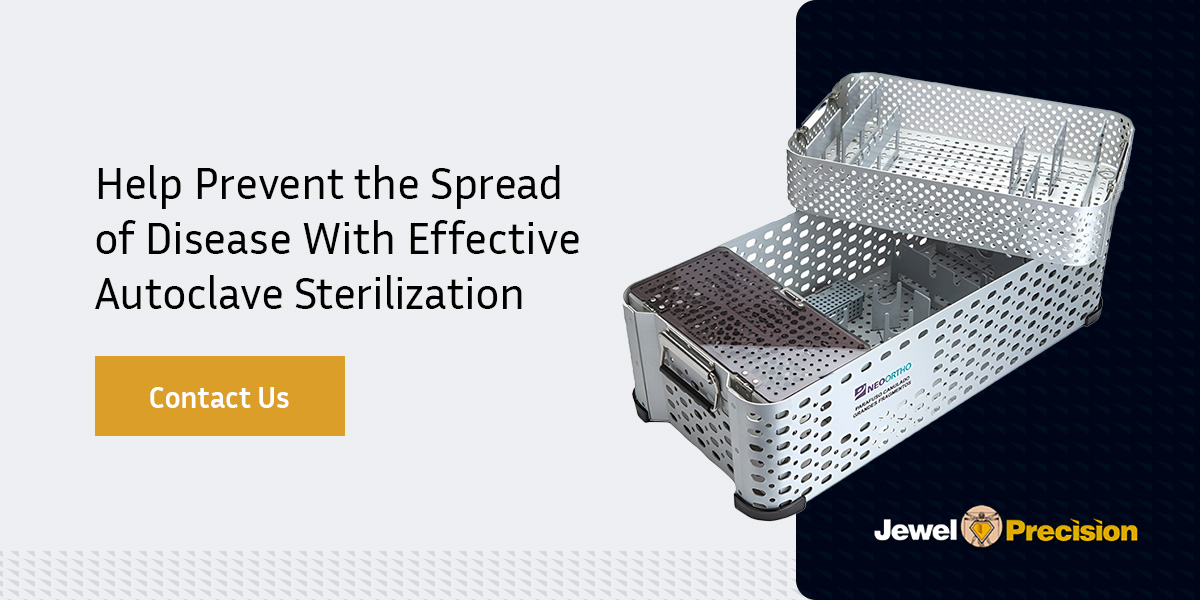
Nearly 40 million people were living with human immunodeficiency virus (HIV) at the end of 2023. HIV can be difficult to detect, as some people do not experience symptoms right away. It’s important to note that HIV does not spread through everyday contact, such as shaking hands, hugging or using the same utensils. It transmits through blood, semen, vaginal fluids, breast milk and shared needles or drug injection equipment.
Patients and healthcare workers alike can make a difference in eliminating stereotypes and preventing HIV transmission by understanding the treatment options of today. For example, HIV cannot survive in an autoclave process, which allows clinicians to kill any HIV on medical instruments.
As a healthcare employee, you know the importance of proper disinfecting protocols to prevent the spread of disease. If you’re working in a lab environment with HIV-positive bloodwork, it’s essential to know how to properly sterilize your instruments.
How to Sterilize HIV-Infected Instruments
Proper sterilization of all needles, syringes and invasive or skin-piercing instruments can help prevent the spread of HIV. Heat provides a high level of disinfection for medical instruments, including:
- Plates
- Screws
- Hemostats
- Forceps
- Scalpels
- Implantable devices
- Hospital linens
- Biomedical waste
- Glassware
- Centrifuge tubes
- Pipette tips
Before sterilization and disinfection, all instruments must be thoroughly cleaned and soaked in a chemical disinfectant or detergent to protect you and other personnel from exposure to HIV. This process can also help loosen organic material for more effective disinfection.
Once the instruments have been initially cleaned, they can be sterilized. Steam sterilization using an autoclave is a reliable option for disinfecting reusable instruments contaminated with HIV. Autoclaves utilize high temperatures, pressure and steam to kill bacteria after a specified time. An autoclave creates an environment of wet heat, similar to a pressure cooker, with temperatures high enough to kill microorganisms.
Some types of microorganisms are more resistant to heat than others, so it’s critical to follow all procedures for safe and effective autoclaving. For example, all instruments must come in contact with steam and heat for proper decontamination. Healthcare personnel should autoclave HIV-infected instruments to an appropriate sterilization temperature for a period of at least 20 to 30 minutes. For some viruses, high heat and an incubation period may be necessary. Autoclaving is a highly reliable method for sterilizing laboratory equipment and decontaminating biohazardous waste.
Tips for Handling HIV-Infected Instruments
All instruments that have come in contact with a patient are considered contaminated, whether or not they are positive for HIV or another virus. Following proper loading, use and unloading procedures is important to achieve the highest sterilization results.
Some tips for healthcare personnel using an autoclave to sterilize instruments that may be infected with HIV include:
- Maintaining water levels: The autoclave must have adequate water to produce enough steam for sterilization. Before using the autoclave, check the distilled water levels to determine if it needs to be refilled.
- Loading technique: All instruments must be placed in the autoclave correctly to ensure they’re properly cleaned — this means leaving enough space between the items to ensure the steam can circulate and contact all equipment. Heavier items should go on the bottom and lighter items on the top. Take care not to overload the autoclave.
- Wear protective gear: As a standard precaution, assume that all bodily fluids are potentially infectious. All personnel using an autoclave must wear personal protective equipment (PPE) to prevent the spread of bacteria and viruses, including HIV. You may be required to wear heat-resistant gloves, lab coats or gowns, eye goggles and masks when handling contaminated instruments.
Common Questions About Sterilization of HIV-Infected Instruments
Below are some common questions about the most effective technique for decontaminating HIV-infected instruments.

1. Does Steam Kill HIV?
Yes. Steam is highly effective in killing bacteria, fungi and viruses, including HIV. An autoclave is essentially a steam sterilizer that kills HIV by breaking down proteins. Steam-sterilizing temperatures typically range from 250 to 270 degrees Fahrenheit.
2. Does Boiling Kill HIV?
Yes. If sterilization equipment, such as an autoclave, is unavailable, medical instruments can be highly disinfected by being boiled for at least 20 minutes. Most bacteria and germs die in water at 130 to 140 degrees Fahrenheit. Therefore, a boiling temperature of 212 degrees Fahrenheit can certainly kill harmful viruses like HIV and other pathogenic microbes. However, some bacterial spores may still be present if there were large numbers initially. Boiling is also not effective for fiber optic instruments.
3. Do High Temperatures Kill HIV?
Yes. HIV becomes destroyed or inactive by heat, which is essential for preparing laboratory testing materials and reusing medical instruments. An autoclave is capable of combining extremely high temperatures and atmospheric pressure to kill the virus.
4. What Is the Best Method for Sterilization?
There are many effective sterilization techniques to prevent the spread of contamination and infection. Autoclave sterilization machines are essential in many medical environments because they can clean many pieces of equipment simultaneously, speeding up the sterilization process. Rather than one person manually disinfecting each tool, they can load multiple instruments in the autoclave and feel confident they will be free of contamination for the next patient.
Additionally, autoclaves can get to bacteria-killing temperatures within a short time automatically, which leaves you and other healthcare personnel free to see to patient needs. Autoclaves can also be a cost-efficient option because they are highly effective at killing viruses like HIV and allow instruments to be reused. What’s more, an autoclave does not give off toxic fumes like some cleaning agents and chemicals.
5. What Items Cannot Be Sterilized?
Some items cannot be sterilized because they are sensitive to heat, meaning they should not go in an autoclave or be exposed to high temperatures. These include:
- Corrosion-susceptible metal alloys
- Electrical devices
- Plastic items
- Chlorine
- Bleach
- Flammable materials
- Reactive materials
- Solvents
- Corrosive materials
- Liquids in sealed containers
- Non-stainless steel
If any of these items have come in contact with HIV-infected instruments or bodily fluids, they may need to be disposed of if they cannot be otherwise disinfected.
Help Prevent the Spread of Disease With Effective Autoclave Sterilization
Proper disinfecting procedures are a priority to prevent the spread of HIV. Using an autoclave in your laboratory or healthcare facility can streamline the disinfecting process and help you achieve effective sterilization. Jewel Precision offers reliable, custom container systems to protect your essential instruments through many sterilization cycles.
Our custom and modular cases and trays make transportation to the autoclave and steam sterilization more convenient for your staff. They also keep your surgical tools secure while in the autoclave to ensure an effective clean. We offer fast turnaround times so you can protect your medical equipment as soon as possible. We invite you to contact us to learn about our competitive pricing and customization options!
